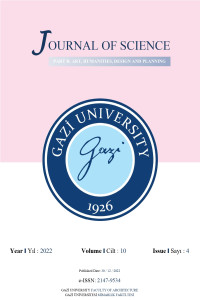Öz
Kaynakça
- [1] Yalçın, H., Gürü, M. (2006). Çimento ve Beton. Ankara: Palme Yayınevi p.15
- [2] Aragaw, T., A. (2020). Cement Types, Admixtures, and Technical Procedures of Cement
- [3] Şimşek, O. (2004). Beton ve Beton Teknolojisi. Ankara: Seçkin Yayıncılık.
- [4] Dodd, A. and Murfin, D. (1994). Dictionary of Ceramics. The Institute of Materials, London.
- [5] Arcasoy, A., Başkırkan, H. (2020). Seramik Teknolojisi. İstanbul: Literatür Yayıncılık
- [6] URL-1. https://sozluk.gov.tr/ Last Accessed: 24.10.2022
AN ANALYSIS OF THE EFFECTS OF CALCIUM ALUMINATE CEMENT ADDITIVE ON PORCELAIN FORMING AND FINAL PRODUCT PROPERTIES
Öz
A key step in artistic production surely involves the selection of materials. Each material has its own unique components and limitations. These limitations also determine basic production processes such as shaping and coloring. Today, these limitations are minimized thanks to optimization and R&D studies in the material industries. Studies on the optimization of materials offer a source for the development of different usage purposes as well as the main usage purposes of the materials and additional properties for the final product.
Concrete and cement-derived materials, which used to be associated with modernism and building in the past, have become alternative materials for artistic productions today. However, like every material, cement has some limitations that affect the design processes such as working range, coloring, shaping and physical and chemical resistance of the final product. In this study, the Calcium Aluminate cement produced under the name ISIDAÇ 40, one of the cements produced by ÇİMSA in accordance with the TS EN 14647 standard, and the granular porcelain casting mud produced by ECZACIBAŞI Esan will be mixed in different proportions, and its suitability for the shaping methods used in the field of ceramics and its effects on the products produced will be discussed.
Kaynakça
- [1] Yalçın, H., Gürü, M. (2006). Çimento ve Beton. Ankara: Palme Yayınevi p.15
- [2] Aragaw, T., A. (2020). Cement Types, Admixtures, and Technical Procedures of Cement
- [3] Şimşek, O. (2004). Beton ve Beton Teknolojisi. Ankara: Seçkin Yayıncılık.
- [4] Dodd, A. and Murfin, D. (1994). Dictionary of Ceramics. The Institute of Materials, London.
- [5] Arcasoy, A., Başkırkan, H. (2020). Seramik Teknolojisi. İstanbul: Literatür Yayıncılık
- [6] URL-1. https://sozluk.gov.tr/ Last Accessed: 24.10.2022
Ayrıntılar
| Birincil Dil | İngilizce |
|---|---|
| Bölüm | Mimarlık |
| Yazarlar | |
| Yayımlanma Tarihi | 30 Aralık 2022 |
| Gönderilme Tarihi | 14 Kasım 2022 |
| Yayımlandığı Sayı | Yıl 2022 Cilt: 10 Sayı: 4 |

